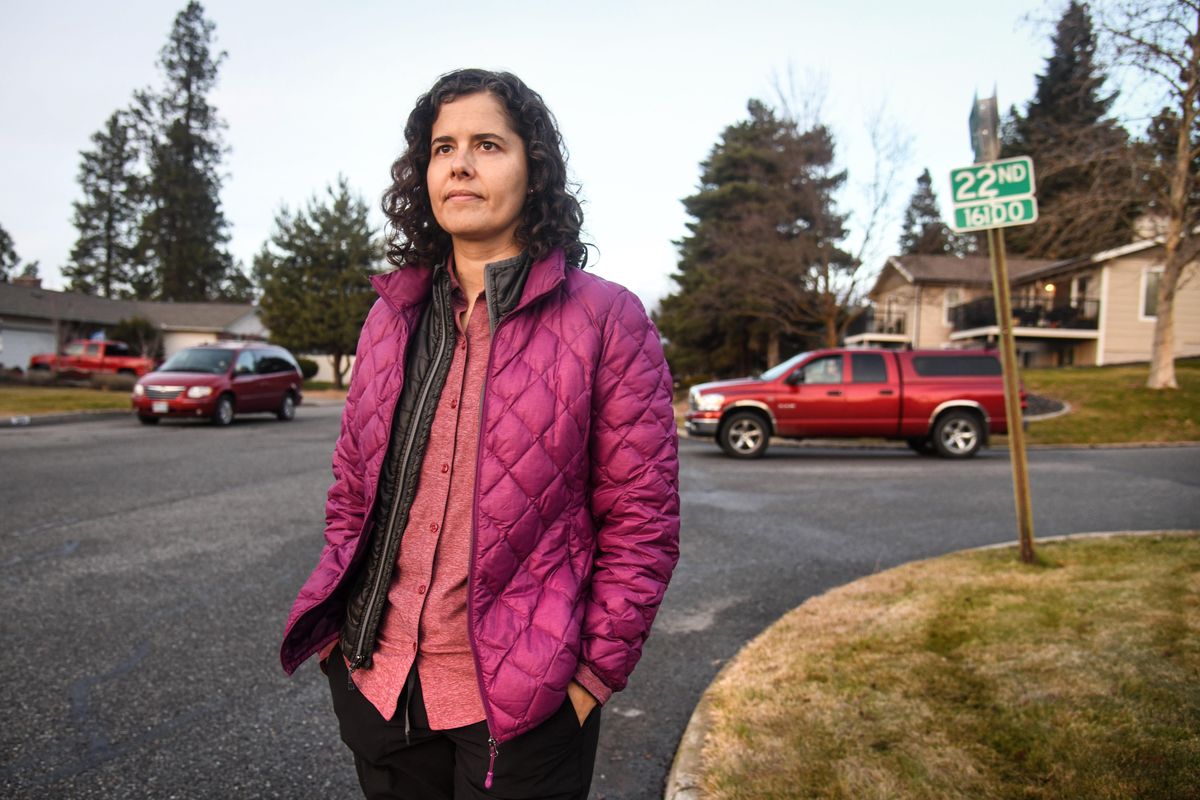Spokane Valley development has neighbors frustrated about traffic

As development continues to encroach on the Ridgemont Estates neighborhood in south Spokane Valley, residents are concerned that a steady increase in traffic is becoming a safety hazard.
The Ridgemont Estates neighborhood, bounded by Sullivan and Barker roads, was developed in the mid-1970s. Spokane County expanded its urban growth area south and east of the neighborhood in 2013. With an economic surge in the region since then, the land is gradually being developed.
A 226-lot housing development, Vistas at Belleaire, is proposed to be built north of the neighborhood.
The proposed development – coupled with new construction in the county and existing traffic in the neighborhood – is estimated to add more than 6,000 vehicle trips per day, according to city documents.
“What we do know is new development on top of the hill does have impacts and as construction increases, there will be a traffic increase to the Ridgemont area,” said Bill Helbig, city engineer, at a Dec. 4 council meeting. “It is anticipated this construction will take five to 10 years to complete as these areas are platted and the housing gets developed.”
But residents say traffic issues are already occurring in their neighborhood, specifically along 22nd Avenue.
Spokane Valley resident Matt Hilbrich said the neighborhood is concerned because 22nd Avenue – with three blind corners, no sidewalks and a steep grade – is being utilized as a major thoroughfare without any speed-prevention measures.
“People can save two minutes from the new development by driving through our neighborhood, which is the root of the problem,” said Hilbrich. “What resident is going to like 6,000 cars going down their street every day?”
Residents reached out to the city via emails, phone calls, testimony at City Council meetings and even presented a signed petition to council members asking them to address the traffic issues.
They put forth several preferred solutions to the city: adding stop signs, radar speed signs with ticketing, speed bumps, or closing their neighborhood street altogether.
City staff conducted two traffic studies in the area and the Spokane Valley Police Department set up a SCOPE radar trailer at three locations in November.
The city’s speed studies found vehicles averaged 29 miles per hour on 22nd Avenue and 25 miles per hour on Conklin Road.
City staff concluded there isn’t a speeding problem in the area and expressed reluctance to add stop signs because they are meant to assign right of way and not to prevent speeding.
They cited standards set forth in the Manual for Uniform Traffic Control Devices, indicating the city could incur liability for not following those standards by installing “unwarranted stop signs.”
The presentation by city staff left residents upset, with some raising voices in anger at the council meeting because they weren’t allowed to comment during the study session.
“People are mad. It’s frustrating,” Hilbrich said. “There’s too much traffic. It’s dangerous. It shouldn’t be like that and the city doesn’t want to redirect traffic.”
Spokane Valley resident Julie Edvalson said there are hundreds of new homes being constructed northeast of the neighborhood in the county’s jurisdiction whose residents are using 22nd Avenue or Conklin Road to travel to Sullivan Road.
Edvalson said traffic has been an issue since she moved into the neighborhood three years ago.
“It was bad then,” she said. “People don’t pay attention. They just zoom through.”
The developer of Vistas at Belleaire is required to install two radar speed signs, but they are tied to doing so once the 31st building permit is approved for the project. The city has yet to determine placement of the radar speed signs, Helbig said.
Studies have shown radar speed signs are effective at controlling speeds, but installing additional signs outside the Vistas at Belleaire development would require a policy change initiated by City Council members, said Helbig.
He said the city will continue monitoring the area and enforcing truck weight restrictions on 22nd Avenue.
Edvalson said it seems the City Council is just looking at what city engineers say they can’t do, rather than considering all available options to alleviate the traffic problem.
“To put in a development and not have a plan for better arterial connections – it just boggles my mind,” she said. “They are thinking about, ‘We have the space,’ but we should be thinking about traffic flow.”